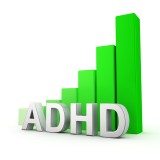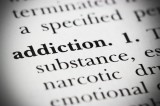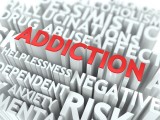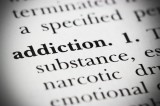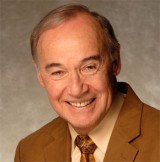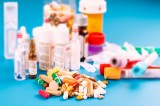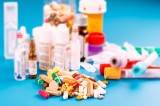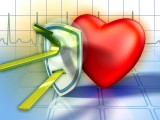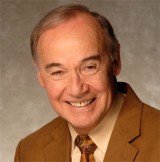Browse Library Database [A]
This is out Library. Please click on the article title to view the details.
ADD/ADHD: What are They?
submitted by: admin on 05/08/2015
The clinical characteristics of these conditions and their treatment are presented. Kids and adults suffer from three common factors: distractibility, impulsivity, and disruptive behavior are classic. Management of ADD/ADHD through drug and nutritional therapies and the importance of emotional support is discussed.
Addendum to Infection Deception-II: A Closer Look at the Science Behind Conspiracy Claims
submitted by: admin on 05/07/2015
"A Return to Healing" Blog: Fri, 01/22/2010 - 13:14 — BBelitsos
[By Byron Belitsos with Dr. Len Saputo] As we indicate in our longer essay posted on this blog, “The Infection Deception-II,” the September 11, 2001 terrorist attacks and subsequent anthrax...
Addiction and Codependency with Kay Kopit
submitted by: admin on 05/07/2015
Addiction and co-dependency often go hand in hand and are very difficult to resolve. It is possible to learn new ways to deal with life situations through coaching. Getting help is the first step.
Addiction as a Teacher with Gary Gwilliam, JD
submitted by: admin on 05/08/2015
Gary tells the story of how he struggled with his own personal addiction and what it took to deal with it. He became an overachieving, highly successful trial attorney. The pattern of his drinking changed and he shares the story with us.
Addiction Medical Treatments with Richard Gracer, MD
submitted by: admin on 05/08/2015
There are chemical changes in the brains of addicts that must be dealt with to reduce the cravings associated with addiction. Genetic factors are considered. Methamphetamine addiction is addressed. Abuse and dependence are differentiate.
For the first time, a doctor has developed a treatment program especially for "hidden" addicts-people whose lives...
Addiction of Teens to the Internet
submitted by: admin on 05/08/2015
Internet addiction and aggression have been linked as an association. There are withdrawal symptoms when the Internet is withheld. Social Internet communities are now common and texting, Facebook, etc, are replacing real time relationships.
Addiction Overview
submitted by: admin on 07/17/2016
10% of Americans are addicted to drugs, much of this is from medications prescribed by physicians. Typical programs for rehabilitation are unsuccessful. What it takes for a successful program is reviewed and new breakthroughs in medications to support the chemical brain disease resulting from drug addiction is reviewed.
Addiction Programs Don't Work with Richard Gracer, MD
submitted by: admin on 05/08/2015
Many addiction programs exaggerate their success. In general only about 15% of people in these programs get better. Usually there is a problem that is urgent that leads to getting into a program. Underlying problems must be addressed.
For the first time, a doctor has developed a treatment program especially for "hidden" addicts-people whose lives...
Addiction with Julia Ross, MA
submitted by: admin on 05/08/2015
Illegal drugs are not the most common form of addiction. Addiction to food is a serious problem. Carbohydrates such as sugar and refined flour are two of the most common culprits. The brain has four appetite regulating sites that can be modified to help solve this problem.
Addictions Health Assessment
submitted by: admin on 07/17/2016
Our Addiction Health Assessment explores what you are addicted to, how your addiction affects your lifestyle, and what you can do to deal with it using mainstream cutting edge therapies and CAM treatments.
Ten percent of Americans are addicted to drugs, much of this is from medications prescribed by physicians. The usual typical...
Adding Proton Pump Inhibitors to NSAIDs
submitted by: admin on 11/22/2019
NSAIDs cause ulcers and proton pump inhibitors help prevent them. Why not combine them? Novel thought, but how wise is this? A clinical trial was done over a 30 day period that showed that GI bleeding was substantially reduced by this combination.
There are many problems with this kind of reasoning. First, most people aren't on NSAIDs for only 30 days...
Addressing Stress and Effects of Prayer and Meditation with David McArthur, JD
submitted by: admin on 05/08/2015
Addressing stress through prayer and meditation shift us to something greater than ourself. This opens us to spiritual guidance and wisdom. Nature does the healing. Humility awakens the soul. Listening and caring are powerful tools. Healing lies within each of us. Healers don't heal, they support the process.
Adolescent Health Declines, Why?
submitted by: admin on 05/08/2015
Teenagers are at a high risk for smoking, alcohol, drugs, and promiscuity because they are trying new things. Education in school on a living a healthy lifestyle is part of the answer. Obesity is another issue.
Adverse Drug Reactions in Hospitalized Patients are Commonplace
submitted by: admin on 05/08/2015
There are more than 100,000 deaths from the expected side effects of pharmaceutical drugs and more than 2 million events requiring hospitalization. Mistakes in administering drugs in the hospital are now commonplace. We have problem!
Adverse Drug Reactions in Seniors Leads to ER Admissions
submitted by: admin on 05/08/2015
Adverse drug reactions lead to 100,000 emergency room visits or admissions every year. Four medications that include Coumadin, insulin, antiplatelet agents, and oral hypoglycemic medications, account for more than 2/3 of all incidences. Patients need more education, supervision, and lifestyle management if we're going to lower this number. Natural alternatives...
Adverse Drug Reactions in the ER
submitted by: admin on 05/08/2015
Adverse reactions to drugs are not only hard to diagnose, but are costly as well. It is estimated that it is costing 50 million dollars a year in the emergeny department alone. These events increase the risk of hospitalization by 50% and 70% of these adverse drug reaction incidents are preventable.
Adverse Effects of Atypical Antipsychotics in Children
submitted by: admin on 05/08/2015
The side effects of these very powerful medications are serious. They predispose to substantial weight gain and to type 2 diabetes. Indications for their usage must be very carefully considered.
Adverse Effects of Statins
submitted by: admin on 05/08/2015
Whenever drug is criticised, big pharma comes to the rescue to salvage profits. What else would you expect when the reason big pharma exists is to make profits for their shareholders. Last year (2013) the British Medical Journal printed an article that criticized a previous article published in the same journal that suggested extending treatment with statins...
Adverse Medical Events Outside the Hospital
submitted by: admin on 11/24/2019
Most clinical trials assessing adverse medical events (AMEs) have focused on inpatient care. Now there's a study looking at AMEs in private practice and it shows that the numbers are about the same. Most AMEs are from surgeries, diagnostic testing, and treatment errors. Every year there are about 11,000 paid malpractice suits that represent the tip of the...
Affluent People are Less Likely to Reach out for Support
submitted by: admin on 11/24/2019
A study from UC Berkeley published in the Journal of Personality and Social Psychology showed that have-nots reach out to one another in times of trouble, but that the wealthy are more apt to find comfort in material possessions.
What does this say about our value system?! Through education from our role models and what we're taught in school, we learn...
